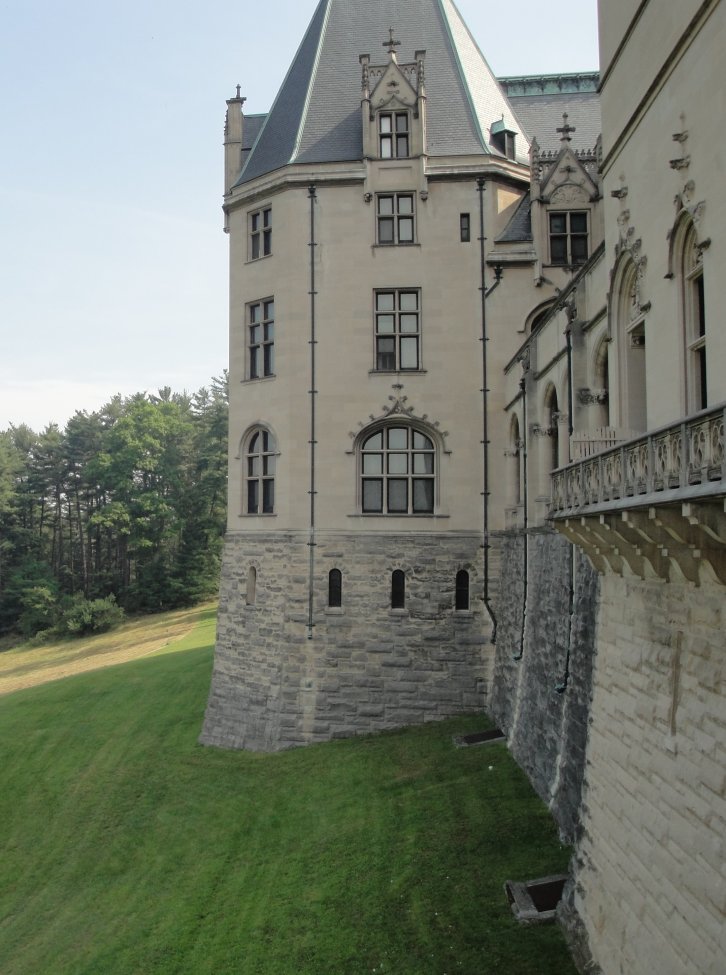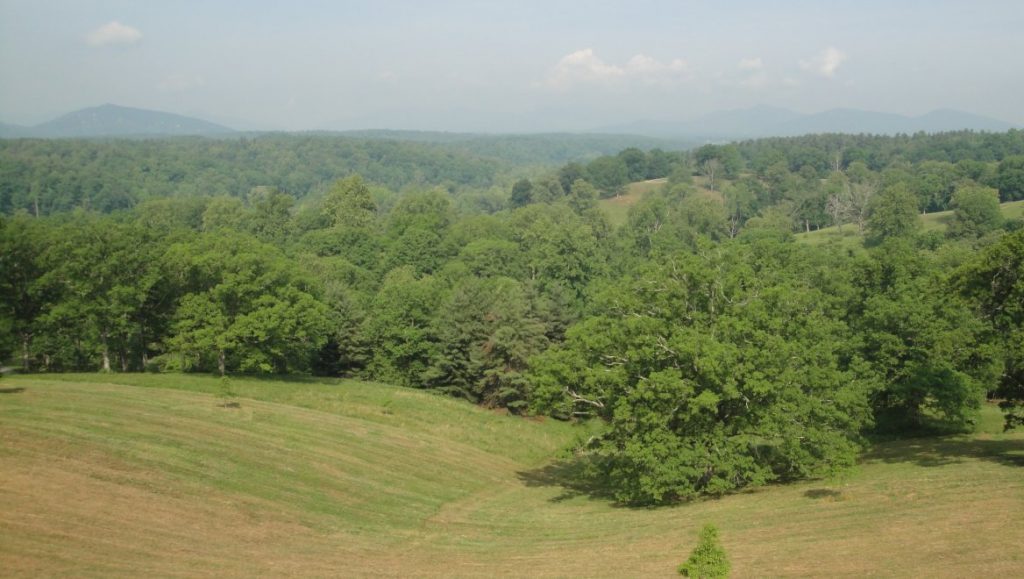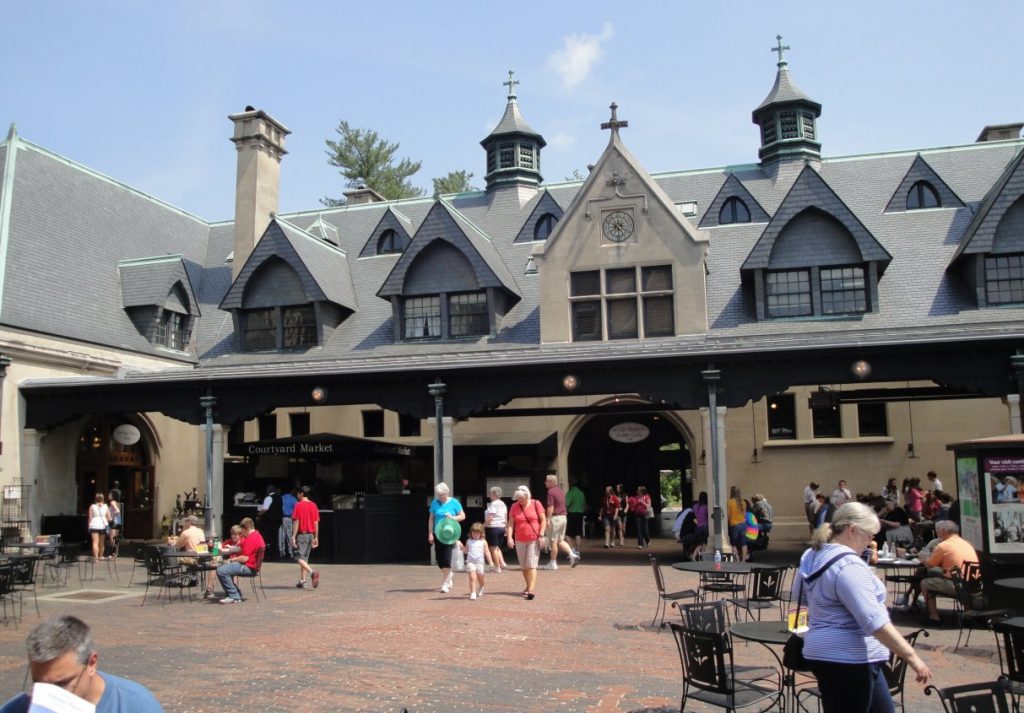
The Biltmore is the biggest house in America, built by George Vanderbilt in the 1890s. It is part of a enormous estate. When Chrissy & I toured the house, the gardens and the general area, it changed our point of view a little. An estate this size is not all about the owners and it is not really about a house as a place to live.
The first thing I noticed is how much the place resembles a hotel. Hotels tended to copy many aspects of these mansions. The “winter dining room” at the Biltmore is a classier version of the Holidomes I used to like so much at Holiday Inns. Beyond that, these big houses were a lot like hotels in their functions. They were set up to host, entertain and feed guests with a large staff devoted to doing it.

The second thing I noticed is how much the owners of this estate played their role. The Vanderbilts always seemed to be on stage. They changed their clothes dozens of times a day. There were specialty clothes for walking in the eating each of the meals, playing tennis, sitting in the library or walking in the garden. Below is the gate to the Estate. After you pass through the gate, it still takes you around 15 minutes to drive to the actual estate buildings.
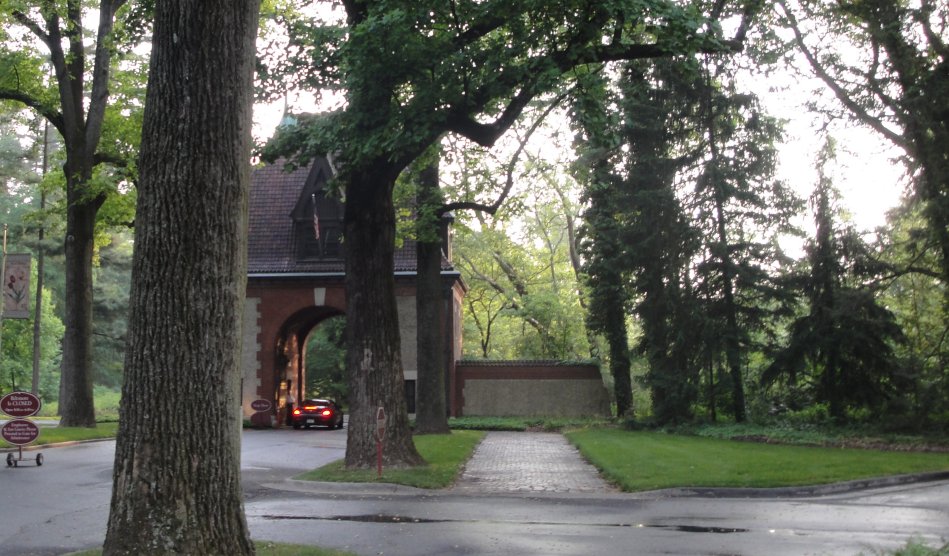
My first impulse was to dislike the Vanderbilts because they had piles of money and engaged in conspicuous consumption on a grand scale. But they did a lot of good with the money too. This massive investment in the hills of North Carolina employed lots of people and not only maids, butlers and kitchen staff. Building the place required a massive labor force, as did building and maintaining the gardens. Of course those things are still a type of consumption. But the estate also included working farms and forests. Some of the science of forestry was invented on the estate. Gifford Pincot, the father of American forestry worked here. I learned how to use a “Biltmore stick” to estimate timber volume when I studied forestry in college. I never knew were the word came from. I guess I just figured it was named after some guy named Biltmore. It was named after the estate because its use originate here.

Fredrick Law Olmsted designed the gardens, the same landscape architect who designed Central Park in New York. He also designed some parks in Milwaukee, including West Park (which became Washington Park), Riverside Park and Lake Park. Olmsted was expert in the use of water in the landscape. Above is a bridge over the bass pond he created at the end of the garden. Below is the rose garden.
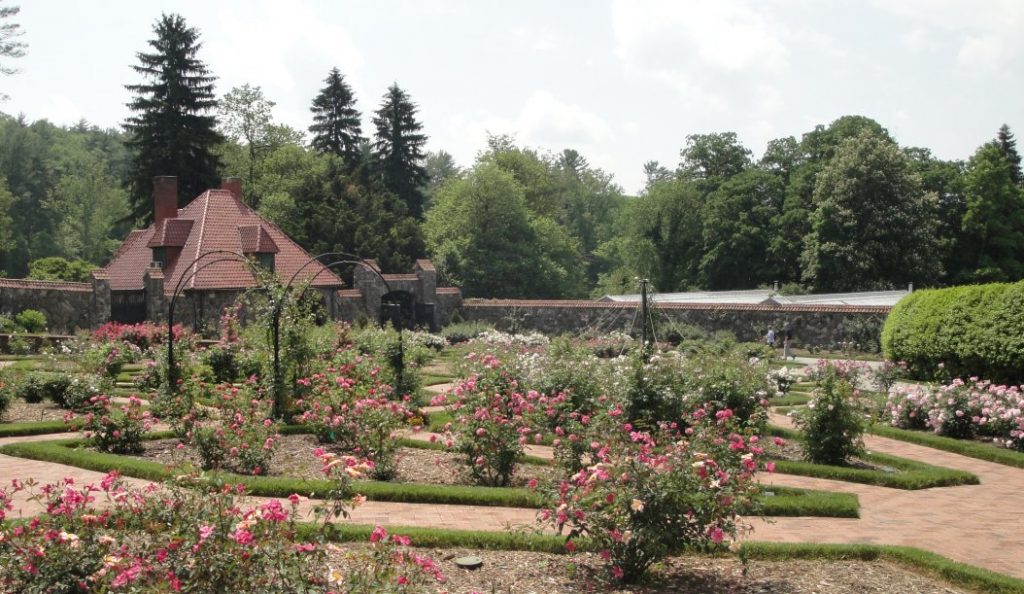
You couldn’t take pictures in the house. It was a nice place. As I said, it reminded me of a nice hotel, so if you have been in a nice hotel, you have an idea. It must have been really impressive 100 years ago. Today we are accustomed to big buildings (like hotels). At the time the Biltmore had new innovations such as electricity, indoor bathrooms and refrigeration. Now everybody has those things. The rich today can live a very opulent life, but the practical difference between being rich and poor is smaller because being poor is a lot less miserable than it used to be.
Additional pictures


